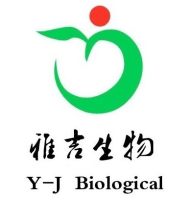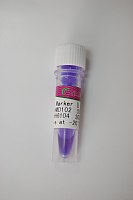DNA Origami: Synthesis and Self‐Assembly
互联网
- Abstract
- Table of Contents
- Materials
- Figures
- Literature Cited
Abstract
DNA origami is an emerging technology for designing defined two? and three?dimensional (2D and 3D) DNA nanostructures. Here, we report an introductory practical guide with step?by?step experimental details for the design and synthesis of origami structures, and their size expansion in 1D and 2D space by means of self?assembly. Curr. Protoc. Nucleic Acid Chem. 48:12.9.1?12.9.18. © 2012 by John Wiley & Sons, Inc.
Keywords: DNA origami; designed nanospace; self?assembly; DNA nanotechnology; atomic force microscopy
Table of Contents
- Introduction
- Basic Protocol 1: Structural Design of DNA Origami and Additional Design Strategies for 1D and 2D Self‐Assembly
- Basic Protocol 2: Synthesis of DNA Origami
- Basic Protocol 3: 1D Self‐Assembly of Origami Structures
- Basic Protocol 4: 2D Self‐Assembly of Multiple Origami Structures
- Reagents and Solutions
- Commentary
- Literature Cited
- Figures
Materials
Basic Protocol 1: Structural Design of DNA Origami and Additional Design Strategies for 1D and 2D Self‐Assembly
Materials
Basic Protocol 2: Synthesis of DNA Origami
|
Figures
-
Figure 12.9.1 The schematic drawing of the structures prepared using the DNA origami method and their AFM images. The top row represents the folding paths of the scaffold. Only the raster fill patterns of the scaffold are shown and the staples are not included here. The middle row represents the diagrams after the addition of staples, showing the bend of helices at crossovers where helices touch and away from crossovers where helices bend apart. AFM images of the representative schemes are given in the bottom row. AFM images correspond to a size of 165 × 165 nm. View Image -
Figure 12.9.2 Design of a DNA origami structure. (A ) The schematic design of a shape (red) approximated by parallel double helices joined by periodic crossovers (blue). (B ) A scaffold strand (black) runs through every helix and forms more crossovers (red). (C ) As first designed, most staples bind two helices and are 16‐mers. Arrows point to nicks that can be sealed to create longer strands. The yellow diamond indicates a position at which staples may be cut and resealed to bridge the seam. (D ) A finished design after merges and rearrangements of the staples along the seam. Most staples are 32‐mers spanning three helices. View Image -
Figure 12.9.3 The design of a DNA origami “jigsaw piece” structure and its self‐assembly. (A ) Structure of the designed DNA jigsaw piece with a tenon and mortise. (B ) Scheme of the self‐assembly of the DNA jigsaw piece monomer. (C ) The detailed connection around the tenon and mortise between neighboring DNA jigsaw piece monomers. Black and colored DNA sequences denote the M13 and the staple strands, respectively. Blue and green arrow staples represent the left‐ and right‐side edges of the DNA jigsaw piece monomer, respectively. Red arrows represent the connecting staples that bridge the neighboring tiles. View Image -
Figure 12.9.4 (A ) A model structure of the designed DNA JP having a mortise and a tenon (JP‐5). (B ) Scheme of the JP‐5 represented as a matrix of blocks. One block represents four 32‐mer duplexes. (C ) Scheme of the nine monomer JPs showing the position of the tenon, the mortise, and the hairpin markers along with their AFM images. Pink blocks at the bottom of each JP represent the loops. Circles denote the set of four individual hairpin markers. AFM images correspond to a size of 200 × 200 nm. View Image -
Figure 12.9.5 AFM images of the rectangular DNA origami JP (left) and frame structure (right) lyophilized and redissolved in Milli‐Q water. The image sizes are given in each image. View Image -
Figure 12.9.6 DNA JP monomers and self‐assembled structures. (A ) Schematic drawings of the monomers A‐D. Each JP differs by their relative positions of the tenon and mortise. Pink blocks represent hairpin DNA markers for the identification of the tenon and mortise in the AFM image. (B ) AFM images of the DNA jigsaw piece monomers A, B, C, and D after fast annealing from 85° to 25°C at a rate of −2°C/min. (C ) Oligomerization of the single DNA jigsaw piece monomer by self‐assembly from 50° to 15°C at a rate of –0.05°C/min. View Image -
Figure 12.9.7 Self‐assembly of five different DNA JP monomers. (A ) Scheme of the five different monomers and their self‐assembly. (B ) AFM images of the DNA jigsaw piece monomers after fast annealing. (C ) AFM image of the self‐assembled pentamer after slow annealing. View Image -
Figure 12.9.8 (A ) Schemes and AFM images of the trimers assembled along the helical side. (B ) Schematic drawing of the desired final structure of the self‐assembly. (C ) AFM image of the self‐assembled structure prepared from the pre‐assembled trimers. The bright spots in the image represent the loops at the bottom of each monomer. Light spots represent the hairpin markers, which are adjacent to the tenons and the mortises. The image sizes are shown below each image. View Image
Videos
Literature Cited
| Literature Cited | |
| Andersen, E.S., Dong, M., Nielsen, M.M., Jahn, K., Subramani, R., Mamdouh, W., Golas, M.M., Sander, B., Stark, H., Oliveira, C.L.P., Pedersen, J.S., Birkedal, V., Besenbacher, F., Gothelf, K.V., and Kjems, J. 2009. Self‐assembly of a nanoscale DNA box with a controllable lid. Nature 459:73‐76. | |
| Castro, C.E., Kilchherr, F., Kim, D.‐N. Shiao, E.L., Wauer, T., Wortmann, P., Bathe, M., and Dietz, H. 2011. A primer to scaffolded DNA origami. Nat. Methods 8:221‐229. | |
| Chen, J. and Seeman, N.C. 1991. Synthesis from DNA of a molecule with the connectivity of a cube. Nature 350:631‐633. | |
| Chhabra, R., Sharma, J., Ke, Y., Liu, Y., Rinker, S., Lindsay, S., and Yan, H. 2007. Spatially addressable multiprotein nanoarrays template by aptamer‐tagged DNA nanoarchitectures. J. Am. Chem. Soc. 129:10304‐10305. | |
| Chworos, A., Severcan, I., Koyfman, A.Y., Weinkam, P., Oroudjev, E., Hansma, H.G., and Jaeger, L. 2004. Building programmable jigsaw puzzles with RNA. Science 306:2068‐2072. | |
| Ding, B., Deng, Z., Yan, H., Cabrini, S., Zuckermann, R.N., and Bokor, J. 2010. Gold nanaoparticle self‐similar chain structure organized by DNA origami. J. Am. Chem. Soc. 132:3248‐3249. | |
| Douglas, S.M., Chou, J.J., and Shih, W.M. 2007. DNA‐nanotube‐induced alignment of membrane proteins for NMR structure determination. Proc. Natl. Acad. Sci. U.S.A. 104:6644‐6648. | |
| Douglas, S.M., Marblestone, A.H., Teerapittayanon, S., Vazquez, A., Church, G.M., and Shih, W.M. 2009a. Rapid prototyping of 3D DNA‐origami shapes with caDNAno. Nucleic Acids Res. 37:5001‐5006. | |
| Douglas, S.M., Dietz, H., Liedl, T., Hogberg, B., Graf, F., and Shih, W.M. 2009b. Self‐assembly of DNA into nanoscale three‐dimensional shapes. Nature 459:414‐418. | |
| Endo, M. and Sugiyama, H. 2009. Chemical approaches to DNA nanotechnology. ChemBioChem 10:2420‐2443. | |
| Endo, M., Hidaka, K., Kato, T., Namba, K., and Sugiyama, H. 2009. DNA prism structures constructed by folding of multiple rectangular arms. J. Am. Chem. Soc. 131:15570‐15571. | |
| Endo, M., Sugita, T., Katsuda, Y., Hidaka, K., and Sugiyama, H. 2010. Programmed‐assembly system using DNA jigsaw pieces. Chem. Eur. J. 16:5362‐5368. | |
| Endo, M., Sugita, T., Rajendran, A., Katsuda, Y., Emura, T., Hidaka, K., and Sugiyama, H. 2011a. Two‐dimensional DNA origami assemblies using a four‐way connector. Chem. Commun. 47:3213‐3215. | |
| Endo, M., Hidaka, K., and Sugiyama, H. 2011b. Direct AFM observation of an opening event of a DNA cuboid constructed via a prism structure. Org. Biomol. Chem. 9:2075‐2077. | |
| Feldkamp, U. and Niemeyer, C.M. 2006. Rational design of DNA nanoarchitectures. Angew. Chem. Int. Ed. 45:1856‐1876. | |
| Hung, A.M., Micheel, C.M., Bozano, L.D., Osterbur, L.W., Wallraff, G.M., and Cha, J.N. 2010. Large‐area spatially ordered arrays of gold nanoparticles directed by lithographically confined DNA origami. Nat. Nanotechnol. 5:121‐126. | |
| Kuzuya, A., Kimura, M., Numajiri, K., Koshi, N., Ohnishi, T., Okada, F., and Komiyama, M. 2009. Precisely programmed and robust 2D streptavidin nanoarrays by using periodical nanometer‐scale wells embedded in DNA origami assembly. ChemBioChem 10:1811‐1815. | |
| Liu, W., Zhong, H., Wang, R., and Seeman, N.C. 2011. Crystalline two‐dimensional DNA‐origami arrays. Angew. Chem. Int. Ed. 50:264‐267. | |
| Liu, Y., Lin, C., Li, H., and Yan, H. 2005. Aptamer‐directed self‐assembly of protein arrays on a DNA nanostructure. Angew. Chem. Int. Ed. 44:4333‐4338. | |
| Maune, H.T., Han, S‐P., Barish, R.D., Bockrath, M., Goddard, W.A. III, Rothemund, P.W.K., and Winfree, E. 2010. Self‐assembly of carbon nanotubes into two‐dimensional geometrices using DNA origami templates. Nat. Nanotechnol. 5:61‐66. | |
| Mei, Q., Wei, X., Su, F., Liu, Y., Youngbull, C., Johnson, R., Lindsay, S., Yan, H., and Meldrum, D. 2011. Stability of DNA origami nanoarrays in cell lysate. Nano Lett. 11:1477‐1482. | |
| Pal, S., Deng, Z., Ding, B., Yan, H., and Liu, Y. 2010. DNA‐origami‐directed self‐assembly of discrete silver‐nanoparticle architectures. Angew. Chem. Int. Ed. 49:2700‐2704. | |
| Park, S.H., Pistol, C., Ahn, S.J., Reif, J.H., Lebeck, A.R., Dwyer, C., and LaBean, T.H. 2006. Finite‐size, fully‐addressable DNA tile lattices formed by hierarchical assembly procedures. Angew. Chem. Int. Ed. 118:749‐753. | |
| Rajendran, A., Endo, M., Katsuda, Y., Hidaka, K., and Sugiyama, H. 2011a. Programmed two‐dimensional self‐assembly of multiple DNA origami jigsaw pieces. ACS Nano 5:665‐671. | |
| Rajendran, A., Endo, M., Katsuda, Y., Hidaka, K., and Sugiyama, H. 2011b. Photo‐cross‐linking‐assisted thermal stability of DNA origami structures and its application for higher‐temperature self‐assembly. J. Am. Chem. Soc. 133:14488‐14491. | |
| Rajendran, A., Endo, M., and Sugiyama, H. 2012. Single‐molecule analysis using DNA origami. Angew. Chem. Int. Ed. 51:874‐890. | |
| Rothemund, P.W.K. 2006. Folding DNA to create nanoscale shapes and patterns. Nature 440:297‐302. | |
| Seeman, N.C. 1982. Nucleic acid junctions and lattices. J. Theor. Biol. 99:237‐247. | |
| Seeman, N.C. 2003. DNA in a material world. Nature 421:427‐431. | |
| Sharma, J., Chhabra, R., Liu, Y., Ke., Y., and Yan., H. 2006. DNA‐templated self‐assembly of two‐dimensional and periodical gold nanoparticle arrays. Angew. Chem. Int. Ed. 45:730‐735. | |
| Stephanopoulos, N., Liu, M., Tong, G.J., Li, Z., Liu, Y., Yan, H., and Francis, M.B. 2010. Immobilization and one‐dimensional arrangement of virus capsids with nanoscale precision using DNA origami. Nano Lett. 10:2714‐2720. | |
| Williams, B.A.R., Lund, K., Liu, Y., Yan., H., and Chaput, J.C. 2007. Self‐assembled peptide nanoarrays: An approach to studying protein‐protein interactions. Angew. Chem. Int. Ed. 46:3051‐3054. | |
| Zhang, Y. and Seeman, N.C. 1994. Construction of a DNA truncated octahedron. J. Am. Chem. Soc. 116:1661‐1669. | |
| Zhao, Z., Yan., H., and Liu, Y. 2010. A route to scale up DNA origami using DNA tiles as folding staples. Angew. Chem. Int. Ed. 49:1414‐1417. |







